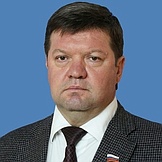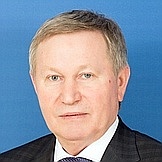Regional flags and emblems


PROFILE
Established 13 February 1924
Capital Stavropol
The Stavropol Territory is part of the North Caucasus Federal District
Area 66,200 sq km
Population 2 883 500 (2025)
Ethnic groups
(2020 National Census, %)
Russian – 82,90
Armenian – 4,86
Dargin – 2,11
Roma – 1,37
Other – 8,76
Administrative divisions (2024)
Municipal districts – 26
City districts – 7
Geography and climate
The Stavropol Territory is located in central North Caucasus and extends from the Caspian lowland in the east to the foothills of the Greater Caucasus Mountain Range in the southwest.
The region borders the Republic of Dagestan, the Kabardino-Balkarian Republic, the Republic of Kalmykia, the Karachayevo-Circassian Republic, the Republic of North Ossetia-Alania, the Chechen Republic, the Krasnodar Territory and the Rostov Region.
The terrain includes foothills areas, the Pyatigorsk volcanic area, the Stavropol heights, the Manych depression, and the Terek-Kuma lowland. The region is mostly located in steppe and semi-desert zones.
The region is covered by a network of canals: the Bolshoi, the Terek-Kum, and the Neftekumsky. There are over 30 lakes, of which the largest is the Manych-Gudilo, and more than 50 reservoirs. The major reservoirs are Sengeleyevskoye, Novotroitskoye, Otkaznoye, Kurskoye, Sovetskoye, Rostavanovskoye, and Chograiskoye.
The climate is temperate continental. January temperatures average –2,3°C, while in July the temperatures average +23,8°C.
The region’s recreational resources are of national significance. The Stavropol Territory’s health and tourist resorts are part of the Caucasus Mineralnye Vody specially protected health resort area. The cities with the best climatic conditions and spa resources are Yessentuki, Zheleznovodsk, Kislovodsk, and Pyatigorsk. There are over 100 springs of about thirty different mineral waters in the Caucasus Mineralnye Vody area.
The specially protected natural areas of the Stavropol Territory include the Caucasian Mineral Waters ecological nature-resort region and 41 state nature reserves of local importance.
Government
The legislative branch is represented by the Duma of the Stavropol Territory, which is the permanent, representative and only body of legislative authority in the region.
The Duma of the Stavropol Territory has 50 deputies elected for five years, with 25 of them running in single-mandate constituencies and the other 25 in the single electoral district, where winners are identified in proportion to the number of votes cast for territorial candidate lists. The current Duma was elected in September 2021. Its term expires in 2026.
Executive power in the Stavropol Territory is exercised by the Governor of the Stavropol Territory, the Government of the Stavropol Territory, which is the supreme executive body of the Stavropol Territory, and other bodies of executive authority (ministries, departments, committees, inspectorates and commissions).
The Governor of the Stavropol Territory is the region’s highest-ranking official and the Chairman of the Government, runs the executive branch and determines the system and structure of the executive agencies of the Stavropol Territory. The Governor is elected for five years by Russian citizens who permanently reside in the region. The term of the incumbent Governor expires in September 2029.
Economy and natural resources
The Stavropol Territory is the industrial, business, logistic, and investment centre of the North Caucasus. The region features a favorable combination of labor resources and significant production capacity. Its diversified economy is based on industrial, agricultural, and recreational sectors.
The regional GDP and tax revenues are derived from four main types of economic activity: industrial production, wholesale and retail trade, agricultural industry, and transport and communications.
The major economic sector is manufacturing, which accounts for 20 % of the regional GDP. The processing industries make up the largest share in the manufacturing sector, accounting for about 80% of all exported goods and services produced in the region. The main industries are the chemical industry (Nevinnomyssky Azot, EuroChem, Arnest), the petrochemical industry (Stavrolen), the food industry (Stavropolsky cannery, Stavropol Sakhar, Pyatigorsky meat factory, Novoaleksandrovsky meat-processing plant (Ygrosprom), consumer goods industry, glass production, porcelain production (Kislovodsk Porcelain – PHOENIX), the woodworking industry, and machine building (Energomera Concern, Stavropol radioplant Signal, Avtopritsep-KamAZ).
The Stavropol Territory is one of the largest producers of mineral fertilizers and artificial sapphires in Europe. The region is also one of Russia’s leading producers of polymer products, glass products, and mineral waters and beverages (Kavminvody, Narzan, Mineralnye Vody Zheleznovodska, Strizhamen distillery).
The production and distribution of electricity, natural gas and water is ensured by the region’s energy complex, which is based on thermal power stations (Stavropol Thermal Power Station, Nevinnomyssk Thermal Power Station, Budennovsk Thermal Power Station, Yegorlykskaya Hydroelectric Power Station, and the series of Kuban hydroelectric power stations), as well as combined heat and power stations (Kislovodsk Combined Heat and Power Station). About 90% of the households have access to the gas distribution system.
The region’s transport network includes railroads (major hubs: Mineralnye Vody, Staromaryevskaya, Nevinnomyssk), motorways (federal motorways: Kavkaz, Astrakhan-Elista-Stavropol), and aviation (international airports in Stavropol and Mineralnye Vody).
Agriculture is one of the most important economic sectors in the Stavropol Territory. The climate in the region is conducive to the cultivation of almost all basic crops. The Stavropol Territory is a major supplier of agricultural products and foodstuffs to Russia. The region holds a leading position in Russia on grain production.
The priority development industries in the agricultural sector are production of grain, leguminous plants, technical and melon crops, vegetables, fruit, grapes, as well as cattle, pig, poultry farming (Resource Agribusiness Group) and fine-fleeced sheep breeding.
The crop sector is dominated by grain production (winter and spring wheat). The major industrial crops are sunflower, soybeans, sugar beet, mustard, and hemp. The fodder crops include alfalfa, sorghum, chickpeas, and silage corn. Horticulture, viticulture, and apiculture are well-developed in the region. Pond fish farming has been also growing.
The region’s health and recreation cluster based on mineral springs and unique environmental conditions is a key component of its economic potential. The main health and recreation resorts are concentrated in the area of the Caucasus Mineralnye Vody.
Culture and tourism
The region’s cultural landscape is multi-ethnic, with mostly Slavic and Cossack traditions prevailing. Many peoples and ethnicities currently inhabiting the North Caucasus have their origins in the territory of the present-day Stavropol Territory. This is evidenced by the burial mounds, ancient settlements, cemeteries, and churches that have been found throughout the region − in the mountains, foothills and valleys of the Kuban, Podkumka, Kuma, Kalaus rivers and their tributaries.
The largest health and recreation resort in the Stavropol Territory is the Caucasus Mineralnye Vody complex, which is often called Russia’s gem.
The Stavropol Territory has rich historical and cultural potential. There are over 2,000 historic and cultural monuments, of which about 70 are of federal significance.
The fortifications of the Azov-Mozdok defence line dating back to the 19th century Caucasus wars have survived as remnants of old fortresses, redoubts, and cobbled roads (Stavropol, Georgiyevsk, Konstantinogorskaya).
The Stavropol Territory is home to two museum-reserves of federal significance – the Lermontov Reserve in Pyatigorsk and the Tatar Settlement in Stavropol. Some of Russia’s most prominent figures, including Alexander Suvorov, Alexei Yermolov, Alexander Pushkin, Leo Tolstoy have links to the region. The collection of the Stavropol Local History Museum has over 200,000 exhibits, incorporating nature, history, economy, and culture of this multi-ethnic region, from ancient times to the present day.


